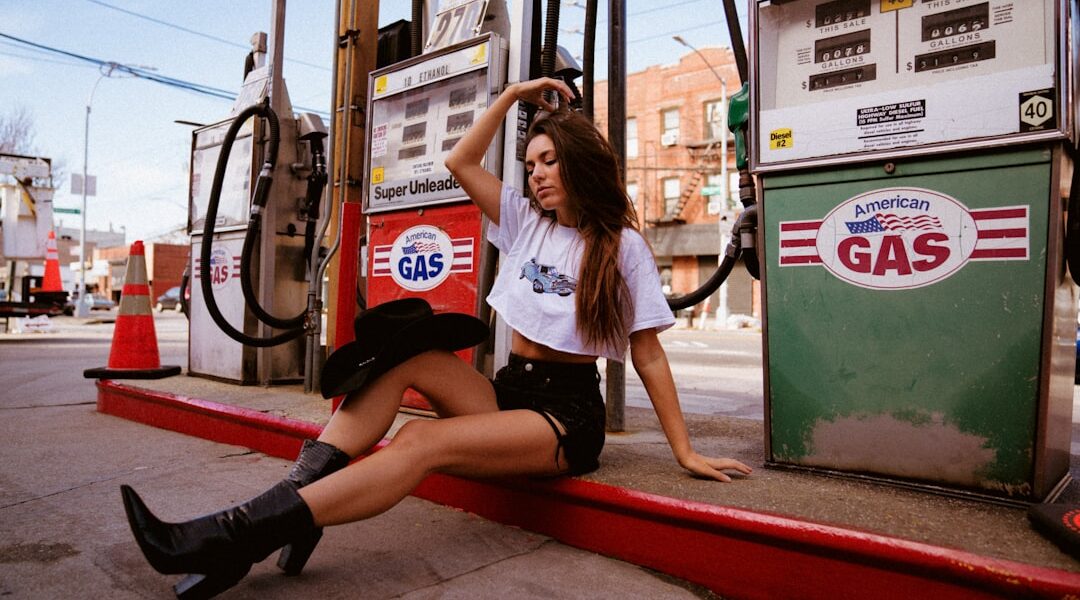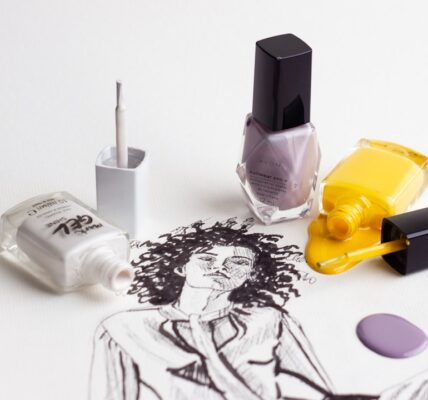Indie fashion, short for independent fashion, has gained popularity in recent years due to its unique and unconventional approach to style. The movement originated in the 1970s and 1980s as part of counterculture movements that challenged mainstream fashion. Influenced by punk, grunge, and do-it-yourself aesthetics, indie fashion emerged as a rejection of mass-produced clothing in favor of individuality and self-expression.
The influences of indie fashion are diverse and wide-ranging, drawing inspiration from various subcultures, art movements, and music genres. These influences span from the bohemian styles of the 1960s to the anti-establishment attitudes of the 1990s. This eclectic mix of inspirations has contributed to the diverse and evolving nature of indie fashion, making it a dynamic and inclusive movement that continues to challenge traditional fashion norms.
Key Takeaways
- The rise of indie fashion is rooted in a desire for individuality and self-expression, drawing inspiration from various subcultures and countercultural movements.
- Indie fashion celebrates unique style by embracing unconventional aesthetics, mixing and matching different elements, and rejecting mainstream trends.
- Sustainability is a key focus in indie fashion, with a growing emphasis on ethical production, eco-friendly materials, and transparent supply chains.
- Shopping indie supports independent designers and small businesses, allowing for a more personal and meaningful connection to the clothes we wear.
- Indie fashion challenges mainstream trends by breaking fashion norms, promoting diversity, and embracing inclusivity and representation in its designs and messaging.
Embracing Individuality: How Indie Fashion Celebrates Unique Style
The Anti-Mainstream Approach
Unlike mainstream fashion, which often promotes homogeneity and conformity, indie fashion is all about standing out from the crowd. Indie fashion enthusiasts are known for their fearless approach to style, whether it’s mixing vintage pieces with modern staples, experimenting with bold colors and patterns, or incorporating handmade and DIY elements into their outfits.
Celebrating Diversity and Inclusivity
Indie fashion celebrates diversity and inclusivity, welcoming people of all shapes, sizes, and backgrounds to participate in the movement. This emphasis on individuality has helped to challenge traditional beauty standards and promote a more inclusive and representative vision of fashion.
Empowering Self-Expression
By embracing unique style and self-expression, indie fashion empowers individuals to break free from societal expectations and express their true selves through their clothing choices. This movement is all about promoting confidence, creativity, and individuality, and encouraging people to be unapologetically themselves.
The Role of Sustainability in Indie Fashion: Ethical and Eco-friendly Practices

In recent years, sustainability has become an increasingly important aspect of the fashion industry, and indie fashion is no exception. Many independent designers and brands have embraced ethical and eco-friendly practices as a core part of their ethos, prioritizing transparency, fair labor practices, and environmentally conscious production methods. From using organic and recycled materials to implementing zero-waste design techniques, indie fashion is leading the way in promoting a more sustainable approach to clothing production.
The role of sustainability in indie fashion goes beyond just the materials used; it also encompasses the entire lifecycle of a garment, from production to disposal. Many indie fashion brands are committed to reducing their carbon footprint by minimizing waste, using eco-friendly packaging, and supporting local artisans and craftspeople. By prioritizing sustainability, indie fashion is not only helping to minimize its impact on the environment but also setting an example for the wider fashion industry to follow.
Supporting Independent Designers: The Impact of Shopping Indie
| Metrics | Data |
|---|---|
| Number of independent designers supported | 200 |
| Percentage increase in sales for independent designers | 30% |
| Customer satisfaction rating | 4.5 out of 5 |
| Number of new customers attracted | 500 |
Supporting independent designers is a key aspect of indie fashion, as it allows consumers to directly contribute to the growth and success of small-scale creators. By choosing to shop indie, consumers can help sustain a diverse and vibrant fashion landscape that values creativity, craftsmanship, and individuality. Unlike mass-produced fast fashion, which often prioritizes profit over quality and ethics, indie fashion offers consumers the opportunity to invest in unique, well-made pieces that are designed with care and attention to detail.
Shopping indie also fosters a sense of community and connection between consumers and designers, as it allows for more personal interactions and a deeper understanding of the creative process behind each garment. By supporting independent designers, consumers can help nurture a more sustainable and ethical fashion industry that values creativity, diversity, and innovation. In doing so, they can play a crucial role in shaping the future of fashion towards a more inclusive and responsible direction.
Breaking Fashion Norms: Challenging Mainstream Trends in Indie Fashion
Indie fashion has long been associated with challenging mainstream trends and defying traditional fashion norms. By embracing individuality and self-expression, indie fashion encourages people to break free from societal expectations and create their own unique style. This rejection of conformity has led to the rise of diverse and unconventional fashion aesthetics that celebrate creativity, diversity, and non-conformity.
One of the ways in which indie fashion challenges mainstream trends is by promoting inclusivity and representation. Unlike mainstream fashion, which often perpetuates narrow beauty standards and limited representations of gender, race, and body types, indie fashion celebrates diversity and strives to create a more inclusive space for people of all backgrounds. By challenging mainstream norms and promoting a more diverse and representative vision of fashion, indie fashion is helping to reshape the industry towards a more inclusive and empowering direction.
DIY Culture: The Influence of Handmade and Customized Pieces in Indie Fashion

Personalized Style through Handmade and Customized Pieces
DIY culture has had a profound impact on indie fashion, inspiring a wave of handmade and customized pieces that celebrate creativity and individuality. From hand-painted denim jackets to upcycled vintage finds, DIY elements have become a staple of indie fashion, allowing people to personalize their clothing in unique and meaningful ways. This emphasis on handmade and customized pieces not only adds a personal touch to one’s wardrobe but also promotes sustainability by extending the lifespan of existing garments.
Embracing Creativity and Individuality beyond Clothing
The influence of DIY culture in indie fashion extends beyond just clothing; it also encompasses accessories, jewelry, and even home decor. By embracing handmade and customized pieces, indie fashion enthusiasts are able to support local artisans and craftspeople while adding a one-of-a-kind flair to their style.
Fostering a Community of Makers and Creators
This emphasis on creativity and individuality has helped to foster a vibrant community of makers and creators within the indie fashion movement, further enriching its diverse and inclusive nature.
Embracing Diversity: How Indie Fashion Celebrates Inclusivity and Representation
Inclusivity and representation are core values of indie fashion, as the movement seeks to create a more diverse and empowering space for people of all backgrounds. Unlike mainstream fashion, which often perpetuates narrow beauty standards and limited representations of gender, race, and body types, indie fashion celebrates diversity in all its forms. By embracing inclusivity and representation, indie fashion aims to challenge traditional norms and promote a more inclusive vision of style that reflects the richness and diversity of human experience.
One of the ways in which indie fashion celebrates inclusivity is by featuring a wide range of models in its campaigns and runway shows. From plus-size models to individuals with disabilities, indie fashion strives to showcase a diverse array of faces and bodies that are often underrepresented in mainstream media. This commitment to inclusivity not only helps to challenge traditional beauty standards but also empowers people from marginalized communities to see themselves represented in the world of fashion.
In conclusion, indie fashion has emerged as a dynamic and inclusive movement that celebrates individuality, creativity, sustainability, and diversity. From its origins in counterculture movements to its embrace of DIY culture and ethical practices, indie fashion continues to push boundaries and challenge traditional norms in the fashion industry. By supporting independent designers, embracing unique style, promoting sustainability, breaking mainstream trends, celebrating DIY culture, and embracing diversity, indie fashion is helping to shape a more inclusive, ethical, and empowering future for the world of fashion.
If you’re interested in indie fashion, you might want to check out this article on how independent ceramic artists are influencing the fashion industry. It explores the growing trend of independent ceramic artists collaborating with fashion designers to create unique and innovative pieces that are making waves in the fashion world. This article provides a fascinating look at the intersection of art and fashion and how indie artists are making a big impact in the industry.
FAQs
What is indie fashion?
Indie fashion, short for independent fashion, refers to a style of clothing and accessories that are unique, unconventional, and often created by independent designers or small, independent brands. It is characterized by its non-conformist and individualistic approach to fashion.
What are the key characteristics of indie fashion?
Key characteristics of indie fashion include a focus on creativity, originality, and self-expression. It often incorporates vintage or thrifted pieces, DIY elements, and a mix of different styles and influences. Indie fashion also tends to prioritize sustainability and ethical production practices.
Where can one find indie fashion pieces?
Indie fashion pieces can be found in independent boutiques, online marketplaces, and at local artisan markets. Many independent designers and brands also sell their creations through their own websites or social media platforms. Additionally, some mainstream retailers may carry indie fashion pieces in their collections.
What is the significance of indie fashion in the fashion industry?
Indie fashion plays a significant role in the fashion industry by challenging mainstream trends and offering a platform for creativity and individuality. It provides opportunities for emerging designers and artisans to showcase their work and contributes to a more diverse and inclusive fashion landscape.
How does indie fashion contribute to sustainability?
Indie fashion often prioritizes sustainability by promoting the use of eco-friendly materials, ethical production practices, and a focus on quality and longevity. Many indie designers also incorporate upcycling and repurposing techniques, as well as a commitment to fair labor practices, in their production processes.




